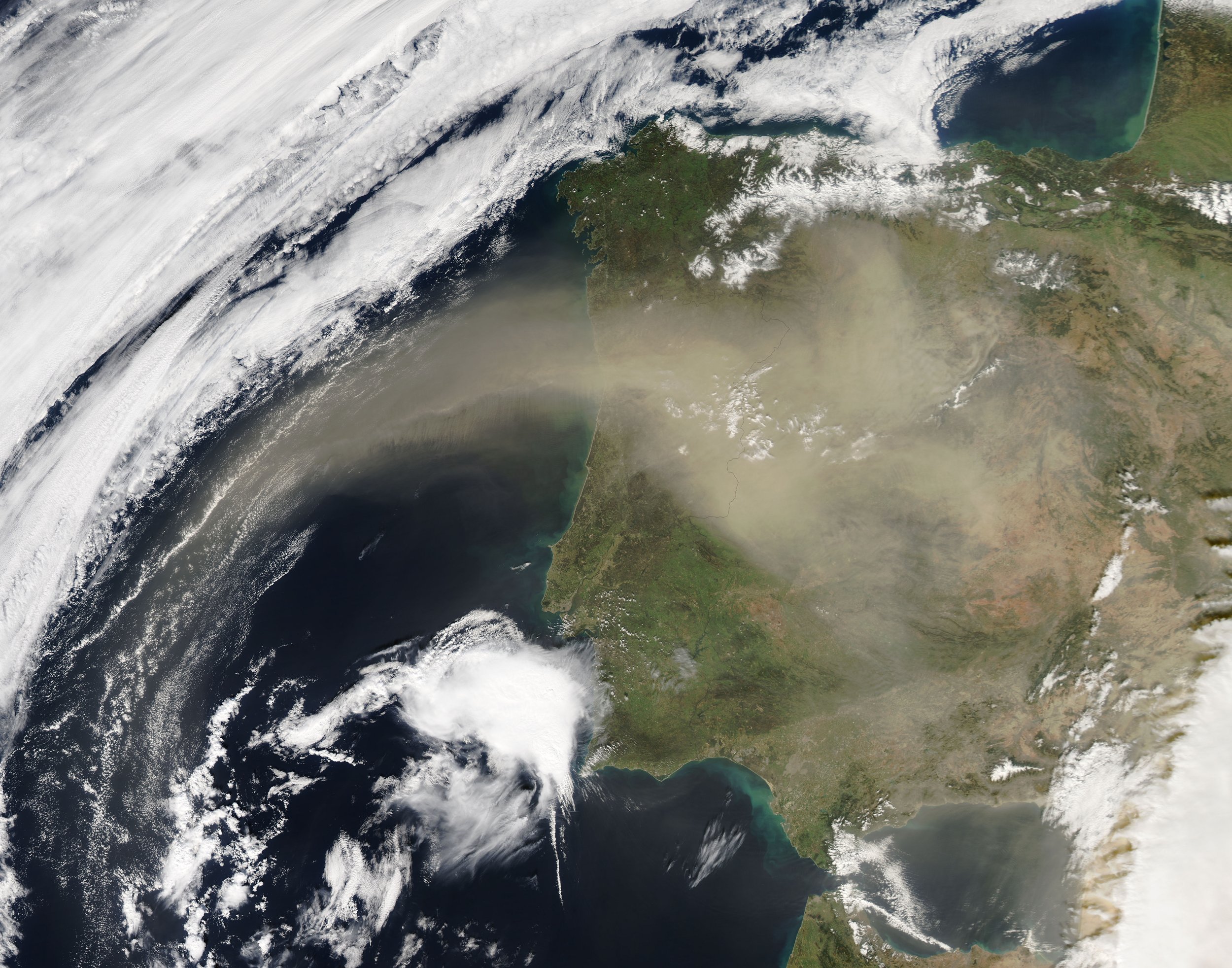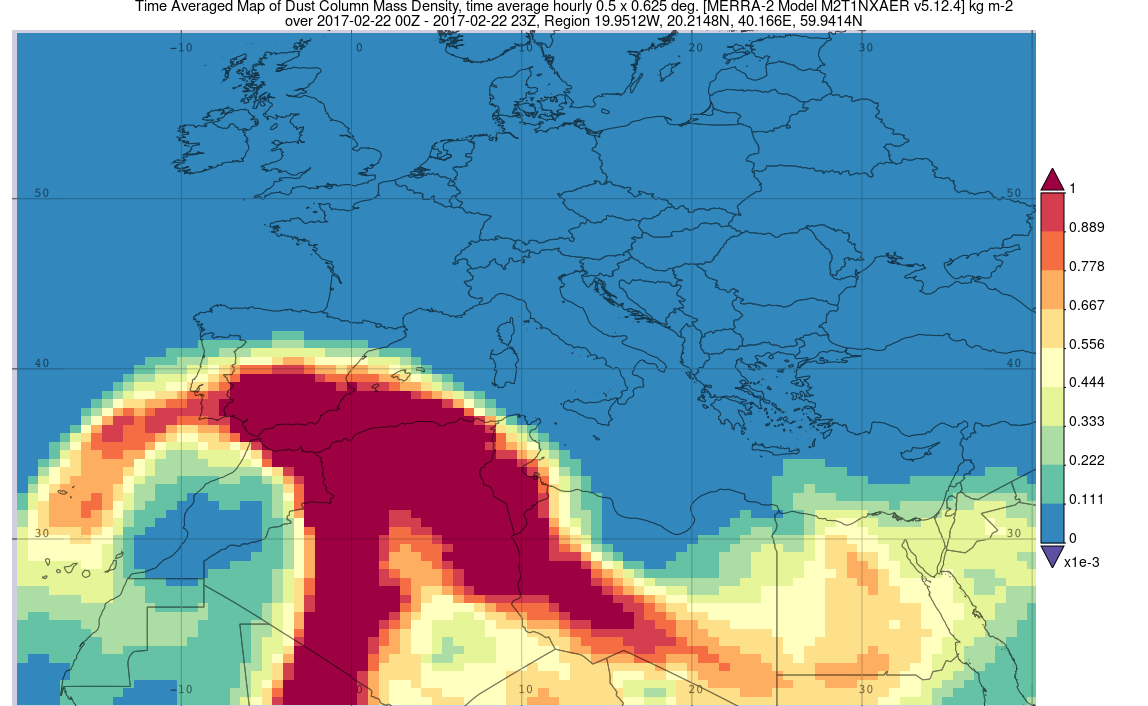
A study of Saharan dust transport over the Iberian Peninsula
Each year, the Iberian Peninsula experiences high levels of Aerosol intrusion in the form of Saharan dust. The dust sits suspended above the peninsula for days at a time.
Saharan dust exposure, like other types of PM 2.5, is linked with adverse respiratory health impacts.
These visuals aimed to help policymakers better understand the progression and magnitude of the event.
Suspended dust levels over the Iberian Peninsula on Feb. 22, 2017.
Suspended dust levels over the Iberian Peninsula on Feb. 23, 2017.
Using the MERRA-2 model, we can see how the dust moved in a 24 hour period, continuously impacting the Iberian Peninsula before moving East over the Mediterranean Sea.
CALIPSO’s flight path on Feb. 20, 2017.
Aerosol subtype data gathered by CALIPSO on Feb. 20, 2017.



